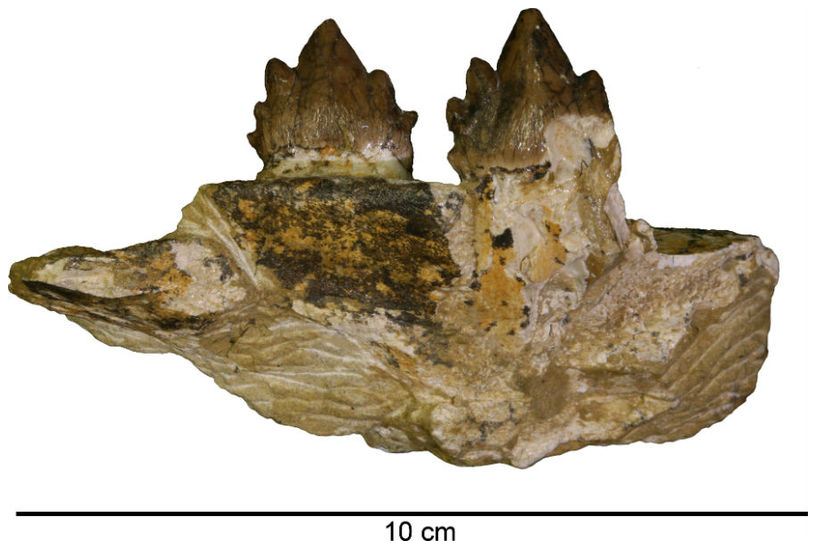Ancient Whale Fossils Unearthed by Road Construction


BOSTON — Fossils uncovered during construction of a roadway in Southern California have revealed four new species of ancient whales, according to research presented here at the annual meeting of the American Association for the Advancement of Science (AAAS) on Sunday (Feb. 17).
One of the species, dubbed "Willy," is much larger than the others and may have eaten sharks, said Meredith Rivin, a paleontologist at the Cooper Archaeological and Paleontological Center in Fullerton, Calif., and part of the team that studied the fossils.
The fossils were excavated a decade ago, but are only now giving up their secrets, in part because it takes so long to separate the fossils from the rocks, Rivin said. "For the last 10 years… I've been trying to 'free Willy,'" Rivin said.
Whale teeth
These animals were toothed, baleen whales, and swam the oceans from about 17 million to 19 million years ago, Rivin said. That's quite a surprise, since this group was thought to have gone extinct about 5 million years earlier, she said.
Most of the world's largest whales belong to a suborder called Mysticeti, which all use a structure called baleen to filter food from the oceans. Their earliest ancestors, however, had teeth. Although these four species of whale don't appear to be direct relatives of modern baleen whales, they may represent transitional forms between the earlier toothed whales and toothless baleen whales, Rivin said. Modern baleen whales like fin whales have teeth only as embryos; the teeth are reabsorbed long before birth, she added.
All modern whales evolved from a single type of land mammal about 55 million years ago, Rivin said. These animals were quite small, about the size of a modern golden retriever, she noted.
Get the world’s most fascinating discoveries delivered straight to your inbox.
It isn't well understood exactly how whales became so gigantic, although it's at least partially related to the development of baleen and a behavior called "lunge feeding," wherein whales swallow enormous amounts of water and filter out tiny animals like krill, said Nicholas Pyenson, a researcher at the Smithsonian National Museum of Natural History, who was not involved in Rivin's research. [See a Blue Whale Dive for Krill]
3D fossil models
Pyenson described Rivin's find as "exciting" and said that he's eager to see the published details of the fossils, which are due in the near future, Rivin said.
Pyenson also happened upon whale fossils unearthed during construction of a roadway, in his case, in Chile. His group only had one week to remove the material and used a laser scanner to create a 3D visualization or map of the fossils, he said. The researchers then used a 3D printer to create a physical model of the fossils, Pyenson said at the AAAS meeting.
The teeth of "Willy" are severely worn down, suggesting that this whale may have eaten large animals like sharks. Modern-day, offshore killer whales show a similar pattern of tooth wear, which results from feeding on thick-skinned sleeper sharks, Rivin said.
Reach Douglas Main at dmain@techmedianetwork.com. Follow him on Twitter @Douglas_Main. Follow OurAmazingPlanet on Twitter @OAPlanet. We're also on Facebook and Google+.



